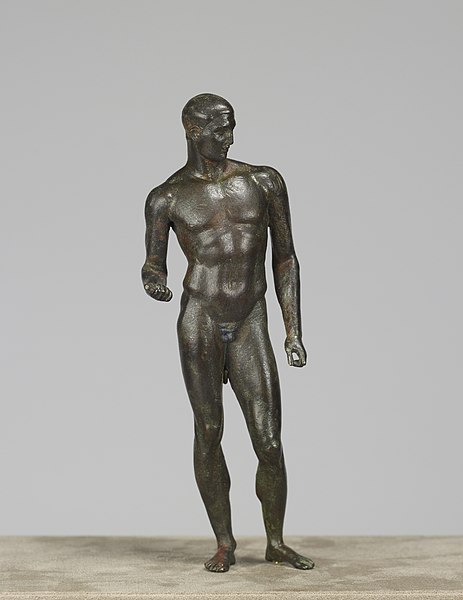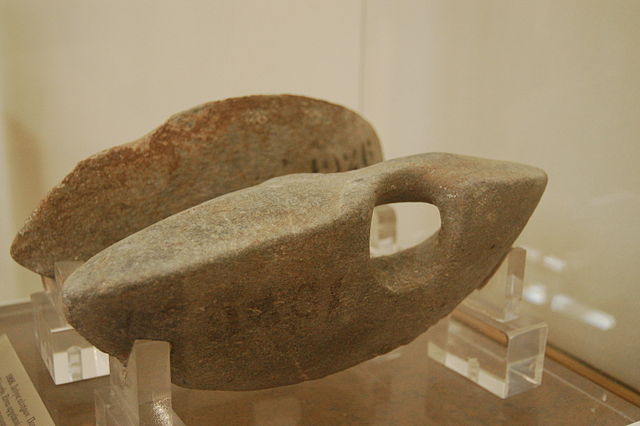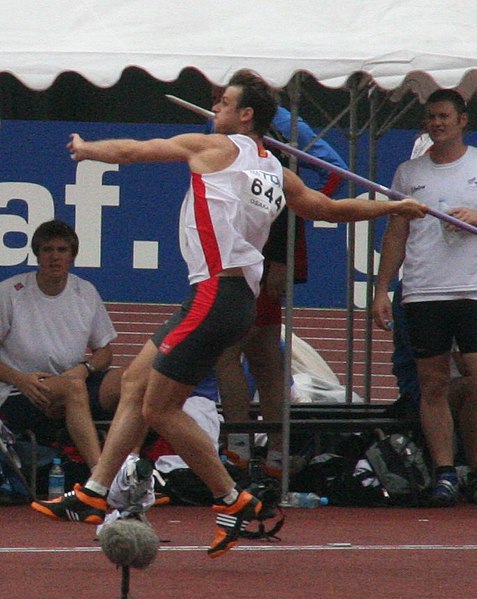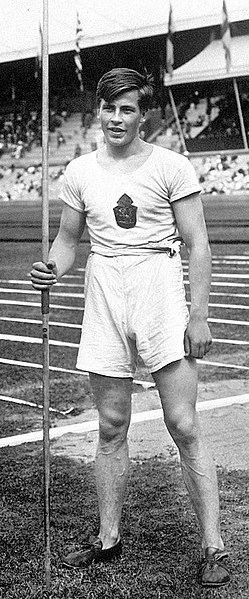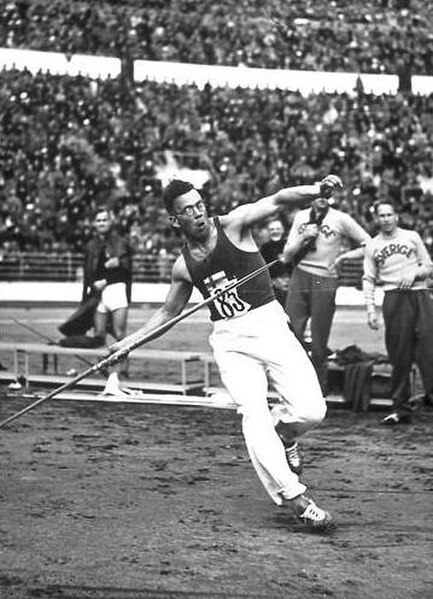A pentathlon is a contest featuring five events. The name is derived from Greek: combining the words pente (five) and -athlon (competition). The first pentathlon was documented in Ancient Greece and was part of the Ancient Olympic Games. Five events were contested over one day for the Ancient Olympic pentathlon, starting with the long jump, javelin throwing, and discus throwing, followed by the stadion and wrestling. Pentathletes were considered to be among the most skilled athletes, and their training was often part of military service—each of the five events in the pentathlon was thought to be useful in war or battle.
The pentathlon was first documented in Ancient Greece, and included the discus and javelin throw.
This depiction of an ancient pentathlete dates to the Hellenistic period, ca. the 1st century BCE. Walters Art Museum, Baltimore.
Halteres were held by athletes in the ancient long jump to push themselves further.
All competitors face each other once in the fencing event.
The javelin throw is a track and field event where the javelin, a spear about 2.5 m in length, is thrown as far as possible. The javelin thrower gains momentum by running within a predetermined area. Javelin throwing is an event of both the men's decathlon and the women's heptathlon.
German javelin thrower Thomas Röhler in 2011
German javelin thrower Stephan Steding during the 2007 World Championships in Athletics in Osaka, Japan
Julius Saaristo in 1912 Summer Olympics
Matti Järvinen throwing the javelin at the 1932 Olympics


